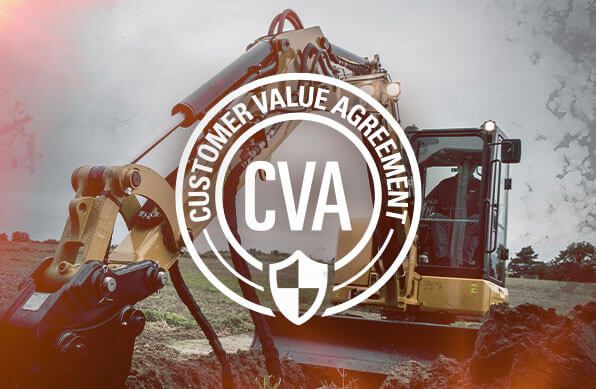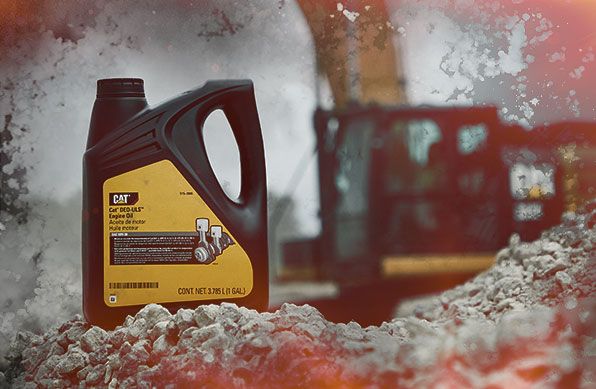If you already have an existing account with another Cat App, you can use the same account to sign in here.
One Account. All of Cat.
Your Caterpillar account is the single account you use to log in to select services and applications we offer. Shop for parts and machines online, manage your fleet, go mobile, and more.
Account Information
Site Settings
Security
Five Key Things Fluid
Analysis Can Reveal
TAKE A CLOSER LOOK.
As fluid change intervals are extended with the introduction of more advanced Tier 4 equipment by OEMs, fluid analysis has become an even more important part of preventive maintenance.
S•O•SSM Fluid Analysis is a highly reliable equipment management service that protects the performance and built-in value of your equipment. By giving you a clear picture of what’s happening inside your equipment, fluid analysis can help increase productivity, reduce repair costs and scheduled down-time, and lower your overall operating costs. It’s a simple approach: through analysis of wear metals, oil condition, oil cleanliness and coolants, problems can be caught before they progress to a complete failure.
How fluid analysis works
Fluid analysis involves taking a small fluid sample, testing its overall condition and looking for the presence of contaminants. The resulting reports can give you advanced warning on a wide range of possible issues from poor air filter performance to deteriorating components.
While one sample gives you a single snapshot of overall system health, you’ll get the greatest value by reviewing fluid analysis reports over time. After taking several samples, you may see patterns emerge, which can help you identify and fix issues.
Take a look at these five key things fluid testing can help you evaluate:
Component wear rate
Why evaluate it?
Each oil-washed system has a particular concentration of wear metals produced during normal operation. By evaluating wear inside the lubricated compartment, you can see if rates are normal or not. For example, high levels of iron and chrome can stem from problems with your engine’s cylinder liners and/or piston rings.
What can it reveal?
- Wear metals (including iron, lead, copper, aluminum and chrome) – indicate which components may be the source by identifying the type of metal present
- Silicon – indicates dirt entry, depending on local soil conditions
- Sodium – a potential indicator of water or coolant entry into the oil
Oil condition
Why evaluate it?
This robust analysis involving several tests can determine if anything harmful has entered the oil.
What can it reveal?
- Soot (from partially burned fuel) – can plug oil filters and cause engine wear
- Dirt – may indicate a hydraulic cylinder leak
- Fuel – can enter through the combustion process and cause low viscosity
- Water (such as from condensation, leaks, wet conditions) – can cause wear, rust and sludge
- Coolant – can contaminate engine oil and decrease effectiveness
Oil identification
Why evaluate it?
The wrong fluid in the wrong compartment can affect performance and lube protection, or even severely damage major components. To tell if it’s the right fluid, it’s important to take an accurate sample with the right labeling.
What can it reveal?
- Viscosity – is it optimal for the geared compartment and your application?
- Additive chemistry – is the oil appropriate based on its unique chemical makeup?
Oil identification
Why evaluate it?
Today’s heavy-duty engines produce a lot of power from a small package, and cooling systems have to do more with less. It’s also not uncommon for some operations to extend drain intervals or recycle coolant to reduce disposal costs. With the introduction of Tier 4 Final engines, some machines have switched over to extended life or Organic Acid Technology (OAT) coolants that cannot be mixed with other types of coolants. It’s important to know the type of coolant you are working with.
What can it reveal?
- Coolant type – with so many on the market, they all have different chemistries; it’s important to know if the coolant type is correct
- Boil & freeze protection – identifies a fluid’s ability to provide adequate protection in the temperatures it works in
- Condition – tests health for pH, conductivity, nitrite, solids, odor, color and appearance, all of which can signal potential problems
- Contamination – can indicate if anything harmful entered the system
Get started with fluid analysis
It’s critically important to properly pull samples. Improper sampling can lead to the introduction of other contaminants and ruin the integrity of the analysis. Be sure to thoroughly review the instructions in your sampling kit. You can also watch this video demonstration from a Cat® preventive maintenance specialist on how to take a proper fluid sample.
If you have a My.Cat.Com account, you can also find S•O•S Fluid Analysis resources through My.Cat.Com tutorials.
Talk to your Cat dealer about S•O•S Fluid Analysis services. They can explain how fluid analysis can extend equipment life, reduce replacement costs and boost reliability and uptime.





